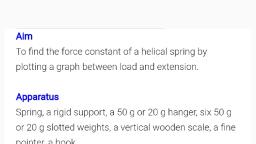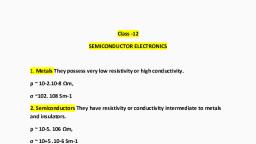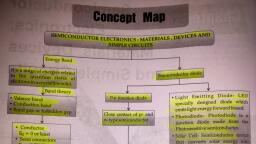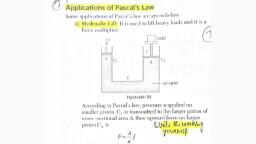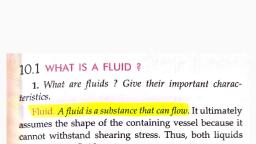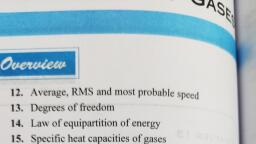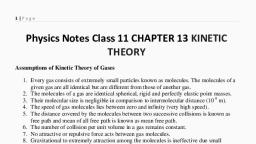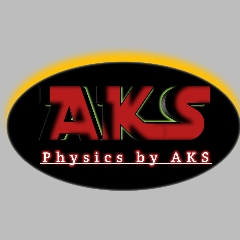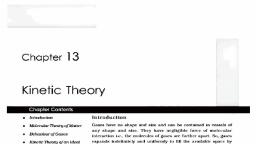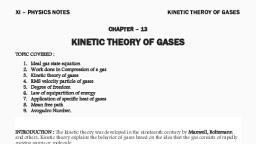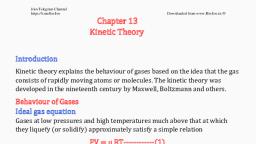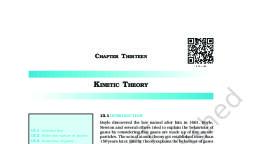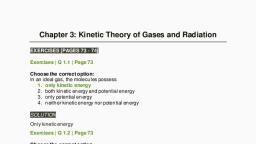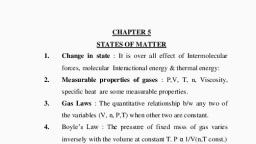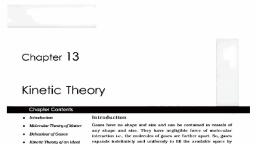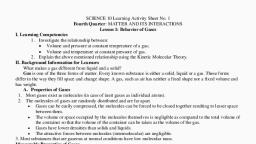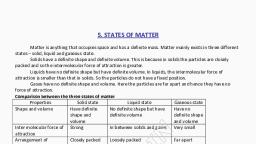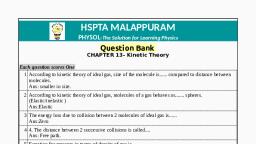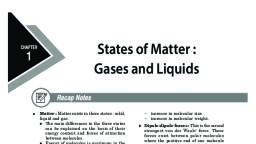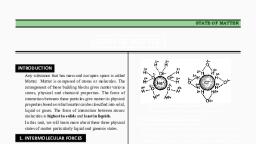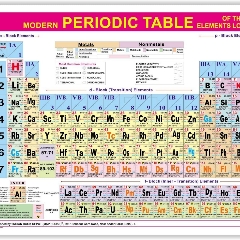Page 1 :
Kinetic Theory, , In this Chapter..., , e Molecular Nature of Matter, , e » Behavi iour ‘of Gases, , e » Laws for an Ideal Gas, , , , e . Kine tic Theory of an Ideal Gas e Brownian Motion, , e , Degree of Freedom
Page 2 :
Laws for an Ideal Gas, Boyle’s Law, , It states that for a given mass of a gas at constant, temperature, the volume of that mass of gas is inversely, proportional to its pressure,, , I, Le. Ve, , Pp, , or pV =constant, , Charles’ Law, , It states that for a given mass of an ideal gas at constant, pressure, volume of a gas is directly proportional to its, absolute temperature., , . V, i.e. V « T or — =constant, , Dalton’s Law of Partial Pressure, , It states that, the total pressure of a mixture of, non-interacting ideal gases is equal to the sum of partial, pressures exerted by individual gases in the mixture., , i.e. p=Pp, +Ppot-:, WRT | UoRT fae, Vv Vv, , Graham's Law of Diffusion, It states that, the rate of diffusion of a gas is inversely, proportional to the square root of its density., , ], , i.e. 1 Os ep, , LO ecucm mm
Page 3 :
Assumptions of Kinetic Theory of Gases, , Assumptions of kinetic theory of gases are given below, , * A given amount of gas consists of a very large number of, molecules (of the order of Avogadro’s number 10”) and all, molecules are identical in all respect., , * The molecules of a gas are in a state of incessant random, motion in all directions with different speeds., , « The size ofa molecule is much smaller than the average, separation between the molecules., , * There is no intermolecular forces between molecules of gas, except during collision., , * The collision between molecules among themselves or, between molecules and walls are perfectly elastic., , ¢ The duration of collision between two molecules is, negligible as compared to time interval of two successive, collisions, i.e. collisions are instantaneous., , « The density and the distribution of molecules is uniform, throughout the gas.
Page 4 :
4 gas is directly proportional to its absolute temperature., , 13.4 PERFECT GAS EQUATION, , 4. State and derive the perfect or ideal gas equation., , Ideal/perfect gas equation. This equation gives the, relation between pressure P, volume V and absolute, temperature T of a gas. The equation is, , PV =nRT, , where n is the number of moles of the gas and R is the, universal gas constant.

